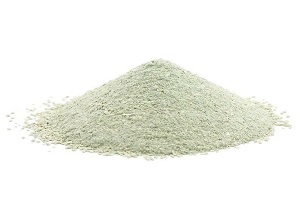- Unit 13,Floor 5h, No 179, Orchid Building, East-Ferdows, Tehran, IRAN
- info@Armaantejarat.com
- 0098912021800

Kaolin

Kaolin
Kaolin is a mineral whose constituent units are kaolinites, which is a hydrated aluminum silicate. Kaolin was first discovered by the Chinese, and kaolin in Chinese means ridge, which is actually taken from a hill in southeastern China. This mineral is composed of the elements silicon, aluminum, oxygen, and the hydroxyl group (OH). The particles of this material are so small that they increase the quality of its suspension and increase its ability to combine with other materials. Kaolin is white in color and also has the ability to shine and reflect light, which is due to its high brightness. Types of Kaolin Below are the types of kaolin grades: Ball clay This type of kaolin is a type of clay rock. In addition to kaolin, there is also a small amount of quartz and chlorite in its composition. Halloysite This type of kaolin has a high amount of impurities. Halloysite clay is used to make fine porcelain and ceramics. This type of kaolin also has different types in terms of total porosity. Dickite A large crystal of kaolin that is more than 10 microns in diameter and is better crystallized than kaolinite. This type of kaolin is composed of metal colonies. Set Nacret This type of kaolin is also like dickite, except that its textures are more irregular. Physical and chemical properties of kaolin This material has a white color and a soft quality structure that dissolves easily in water, has good plasticity and high viscosity. This material is a good electrical insulator, is resistant to acid and alkali changes, and is not flammable. It has a melting point of 1750 degrees Celsius. Adhesion is another physical property of this mineral. The higher the adhesion of this material, the higher its purity. Kaolin extraction method To extract kaolin from the mine, first the ore is extracted, then the ore is crushed and homogenized using a crusher. In the next step, these stones are crushed with a mill, then the concentration process is carried out. To purify this material, it is processed in different ways, after which kaolin will have specific characteristics in each method. This type of extraction is its dry processing, which is used in ceramics, paints and rubber. Wet processing or washing with water causes the impurities in the clay liquid to be separated, and the product obtained from this process is used as a filler and coating. In other cases, kaolin purification can be further increased by using a centrifuge, hydrosilicone, or by using water continuously. In the best case, even the highest quality kaolins in the world have impurities. What kaolin is suitable? Its aluminum oxide percentage should be more than 30%. Its iron oxide content should not be more than 1%. Its titanium oxide content should be less than 2%. Its alkali oxides should not be more than 2%. The maximum calcium oxide content should be 2% and magnesium oxide 3%. Its refractoriness should be around 1700 degrees Celsius. Also, its rupture model should be more than 10 kg/cm2. The higher the amount of kaolinite compared to other minerals, the higher the quality of kaolin. Kaolin Applications Kaolin was initially used for the paper industry. This material acts as a coating for paper to give it gloss and increase printability. This compound is used as a raw material for making many porcelain dishes, which is due to its hardness and gloss. The cosmetics and health industries are also one of the industries that consume kaolin. This material can be used in combination with water alone to create masks, scrubs, and cleansers. Can be used in paint and rubber As an insulator for cables and wires Used in medicine as a pain reliever and swelling inside the mouth caused by radiation therapy, cholera treatment, ulcer treatment and inflammation in the colon As a catalyst in the oil and water industries In building materials for flooring Glass production industry Conclusion Kaolin has unique characteristics and properties that have made it a valuable material in various industries, which seems to be most used in the paper production industry.
